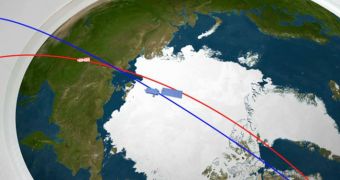Officials at the European Space Agency (ESA) announce that engineers are currently researching a new type of radar system, one that could detect dangerous objects in Earth's orbit. The instrument will also be able to produce advance warnings, on which mission controllers will base decisions taken in the heat of the moment. The project is a part of the agency's Space Situational Awareness (SSA) initiative, and is very likely to reduce the chances of outbound spacecrafts being struck by pieces of space debris. In addition, safety warnings may become available to satellites already in orbit as well, ESA representatives say.
The SSA surveillance radar, together with a much smaller prototype – meant as a demonstrator of the new technology – will be developed by a consortium of European companies, led by Spain-based Indra Espacio S.A. A contract validating this was signed some two weeks ago, on July 7. Top-ranking officials from ESA and Indra Espacio participated at the ceremony. With the document now finalized, the SSA Preparatory Program (SSA-PP) that the space agency is fostering has reached an impressive milestone. It is estimated that the contract has a value of €4.7 million ($6.02 million).
Experts at the Spanish company announce that Indra will be in charge of designing and developing the radar transmitter. The world-renowned Fraunhofer Institute for High Frequency Physics and Radar Techniques, in Wachtberg, Germany, will be in charge of building the radar receiver, arguably the most important part of the entire machine. “Both organizations have extensive experience in the design and development of cutting-edge technology for space applications and we are very pleased to be working with them at this early stage of the SSA Program,” said recently the ESA SSA Program Manager, Nicolas Bobrinsky.
Indra is currently on the lookout for a suitable testing ground to house the new technology, once the necessary components are built. It goes without saying that ESA would prefer a Member State of the European Union, but a clear decision on the final location is months, if not years, away. The Preparatory Program alone – the first stage of the SSA capability – is scheduled to run until 2012. Details on the governance, data policy, technical requirements and overall system architecture are to be completed in the next two years. At this point, the SSA is scheduled to become a reality between 2012 and 2019.

 14 DAY TRIAL //
14 DAY TRIAL //